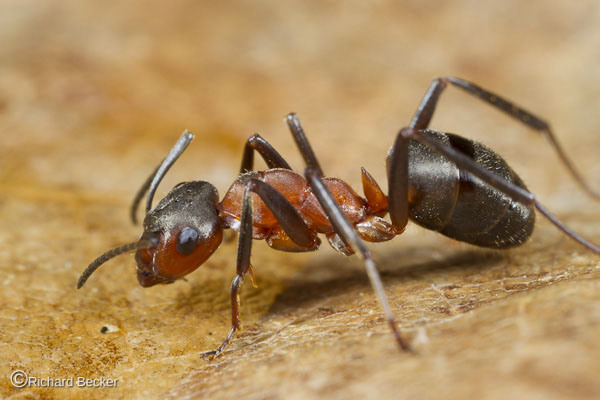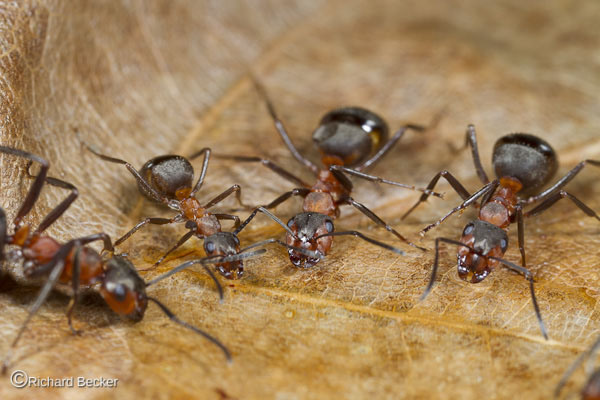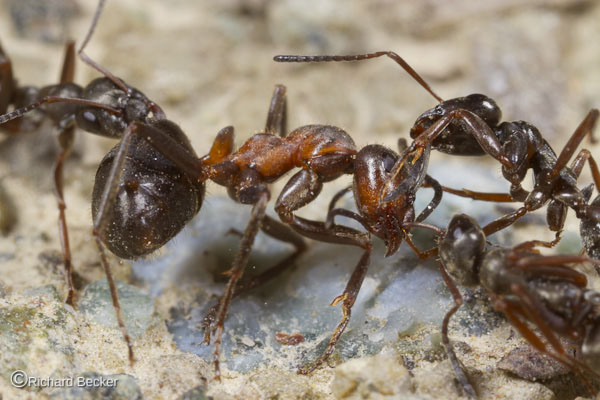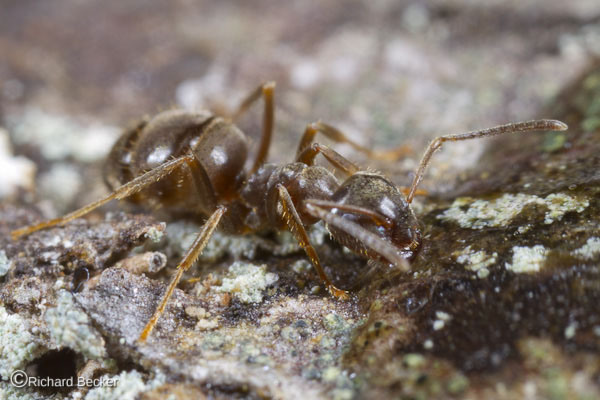20 Apr 2015
We recently went to Blakeridge Wood near Craven Arms to try and photograph the Hairy wood ants (Formica lugubris) which are found there. These are a northern relative of the Red wood ant (Formica rufa) and are on the southern edge of their range on a few sites in the Welsh Borders. The information I had was that only F. lugubris was found on the site so after I had examined a few ants and checked their identity I didn’t bother to check with later finds. The first nest was amongst bramble and not easy to photograph so we went further into the wood and found some other nests that were easier to approach. I got the photos I wanted, but on checking later on the computer and also some specimens I had brought back, found that all the ones I had photographed were F. rufa, which was something of a surprise.


Clearly both species exist within the wood, but whether one is a more recent colonist, or they use different parts of the wood, or one is taking over from the other are unanswered questions. F. lugubris is able to forage at lower temperatures than F. rufa, so has an advantage in areas marginal for rufa. But as the climate warms it could lose out, as appears to be happening in other areas at the southern edge of it’s range.
The only images I came home with of Formica lugubris was a few of a worker being predated by workers of Formica lemani, a common ant of upland areas. F. lemani is also the host when new colonies of F. lugubris are founded. New nests are mainly formed by budding from existing ones, but a single queen can take over a nest of the related species and kill the queen of that nest. The workers of Formica lemani change behaviour to act like Formica lugubris workers, eventually a mixed colony is formed until finally only F. lugubris workers are left. Interestingly workers of one nest of Formica lemani were bringing back conifer leaves and other debris and depositing them at the nest entrance, something they never normally do. It will be worth going back later in the year to see if a mixed species nest has formed, and if so of what wood ant species.

Another ant which I managed to photograph were Lasius platythorax, these are an aggressive relative of the Black garden ant L. niger which nest mainly in dead wood.
